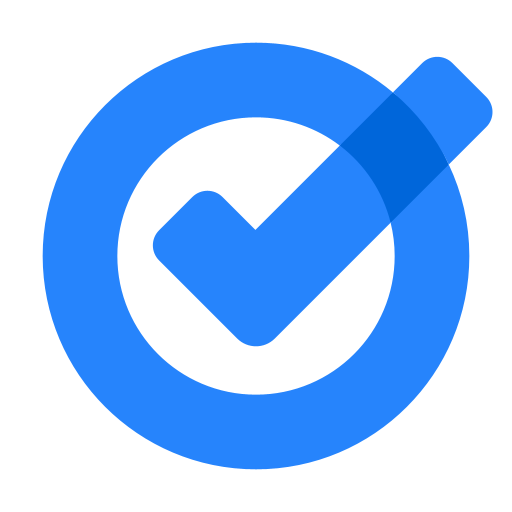Google Tasks is a user-friendly mobile application designed to enhance productivity through streamlined task management and organization.
Its primary objective is to offer users a seamless experience in creating and managing to-do lists, setting reminders, and maintaining an efficient workflow.
With its integration into Google Workspace, Google Tasks facilitates the optimization of the digital workspace and improves time management practices, ensuring that no task is overlooked in daily planning.
The Power of Simplicity in Task Management
The efficacy of simplicity in task management is rooted in its capacity to decrease cognitive load and promote mental clarity, thereby enabling individuals to concentrate on what is truly important, enhancing personal productivity.
By adopting a simplified approach, individuals can improve their organizational skills, resulting in enhanced efficiency, effective goal setting, and better habits.
In an era characterized by numerous distractions, a streamlined method of task management not only boosts productivity but also supports a healthier work-life balance, facilitating the completion of tasks with minimal procrastination.
How Simplicity Can Improve Productivity
Simplicity plays a crucial role in enhancing productivity by enabling individuals to prioritize tasks effectively, utilize focus tools, and improve their performance. By implementing productivity strategies that emphasize streamlined processes and straightforward task completion, users can manage their time more efficiently and address their to-do lists with increased ease. This methodology fosters a mindset of accountability and goal-oriented planning, making daily tasks less daunting.
One effective strategy is to adopt the `two-minute rule,’ which suggests that any task that can be completed in two minutes should be addressed immediately, enhancing task efficiency. This approach can lead to more manageable workloads.
Utilizing digital tools such as task managers and timers can assist in maintaining focus and organization. Additionally, employing techniques like the Pomodoro Technique-working in concentrated bursts followed by short breaks-promotes sustained concentration while mitigating the risk of burnout.
By integrating these straightforward strategies into their daily routines, individuals can cultivate a more organized environment that supports both personal and professional development.
Features and Functions of Google Tasks App
The Google Tasks app provides a comprehensive array of features aimed at enhancing user experience and optimizing task management.
With its intuitive user interface, the app ensures clear task visibility and promotes effective organization through the use of smart lists and checklists.
The mobile functionality allows users to manage their daily tasks conveniently while on the go, and its cross-platform compatibility guarantees that tasks remain accessible across both desktop and mobile devices.
Task Creation and Organization
Task creation and task organization in Google Tasks prioritize simplicity in design, enabling users to create checklists and categorize tasks with ease. This intuitive approach to task management promotes a streamlined workflow, allowing users to efficiently prioritize actionable items.
The application provides features for setting deadlines and reminders, supporting effective organization, notifications, and helping users remain on track with their daily responsibilities.
By utilizing features such as subtasks and notes, individuals can decompose larger projects into manageable steps, thereby alleviating the perceived burden of their overall workload. The seamless integration with other Google services, including Google Calendar and Gmail, significantly enhances productivity by enabling users to convert emails into tasks with a single click.
To maintain an organized task list, users may also utilize color-coding for different projects or categories, facilitating visual identification of priorities at a glance.
Consequently, Google Tasks not only assists with the timely completion of immediate tasks but also contributes to long-term planning and organization, promoting a proactive approach to personal and professional responsibilities.
Integration with Google Calendar and Gmail
Google Tasks integrates seamlessly with Google Calendar and Gmail, thereby enhancing productivity through synchronized task management and reminders. This integration enables users to link emails directly as tasks, which facilitates improved organization and collaboration.
By consolidating all tasks and deadlines in one centralized location, users can streamline their workflows and ensure that no important items are overlooked in their planning.
This powerful combination not only enhances individual efficiency but also promotes effective team collaboration. Team members can effortlessly track shared tasks, update project statuses, and establish deadlines within a unified interface.
The email integration feature allows users to convert incoming messages into actionable tasks, significantly reducing the risk of missing critical responses or follow-ups.
Consequently, users frequently find themselves better equipped to manage their time, prioritize tasks effectively, and achieve their objectives while maintaining a clear overview of both personal and collaborative responsibilities.
Tips for Using Google Tasks App Effectively
To utilize the Google Tasks app effectively, it is advisable to incorporate specific tips and productivity techniques that can significantly enhance task completion and user satisfaction.
By setting clear task reminders and employing effective day planning strategies, users can manage their daily activities with greater efficiency.
Additionally, the use of a prioritization matrix can facilitate the identification of high-impact tasks, ensuring that focus remains on the most critical objectives.
Maximizing Productivity with the App
Maximizing productivity with the Google Tasks app requires the effective utilization of various efficiency tools, minimal design principles, and time management strategies. By leveraging automation features and conducting thorough task analysis, users can identify opportunities for improvement and streamline their processes.
This proactive approach not only enhances task visibility but also cultivates a culture of accountability and motivation in pursuit of personal productivity objectives.
The integration of features such as reminders, deadlines, and recurring tasks can significantly alleviate the mental burden associated with project management. Users are advised to decompose larger goals into smaller, manageable tasks, thereby ensuring that each step is accounted for and contributes to the overall objective.
Employing time-blocking techniques can further enhance the functionality of Google Tasks, enabling individuals to allocate specific time periods for task completion. By consistently reviewing completed tasks and adjusting priorities based on progress, users can continually refine their strategies, ultimately optimizing each day for maximum efficiency.







Comments closed.